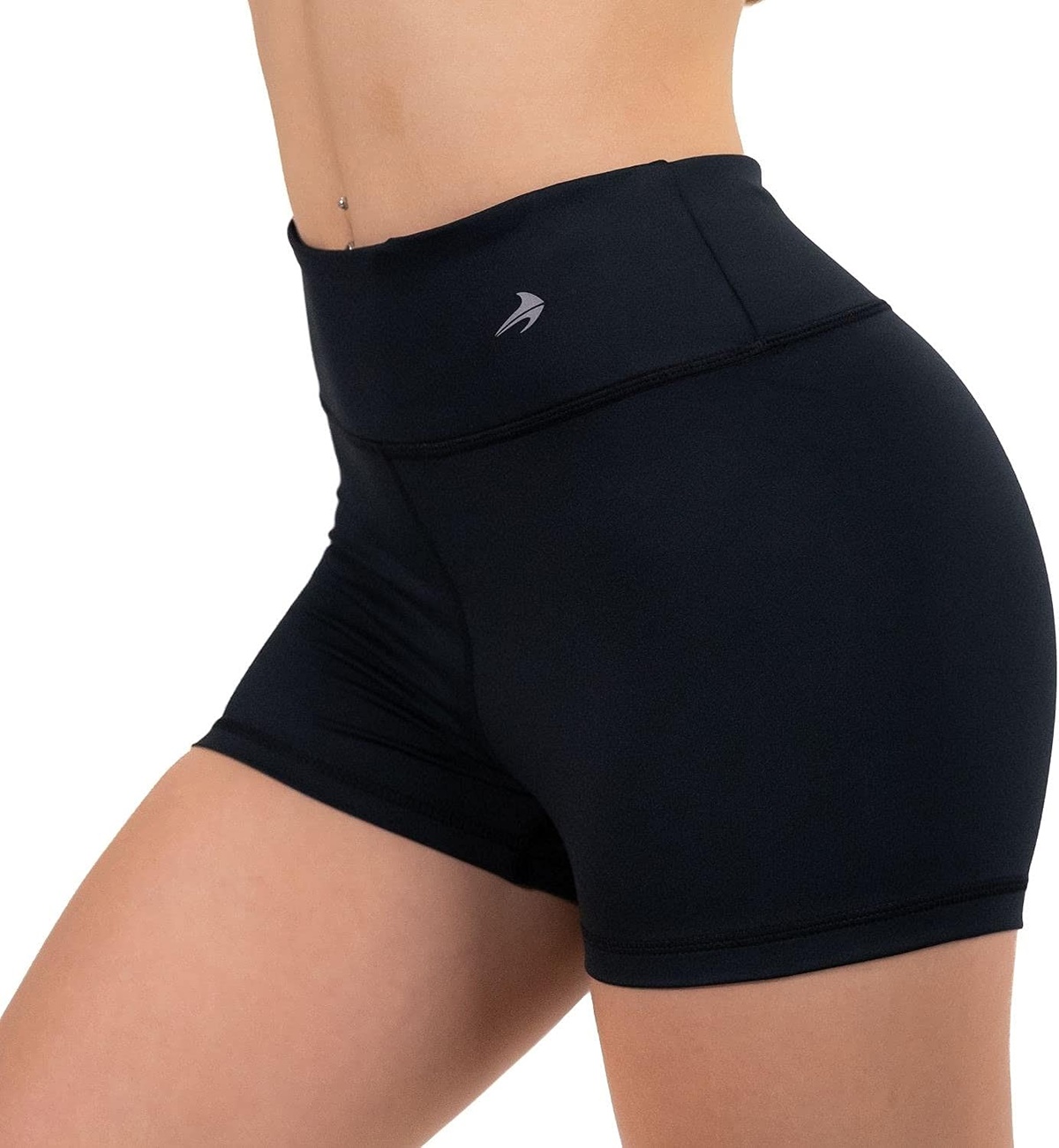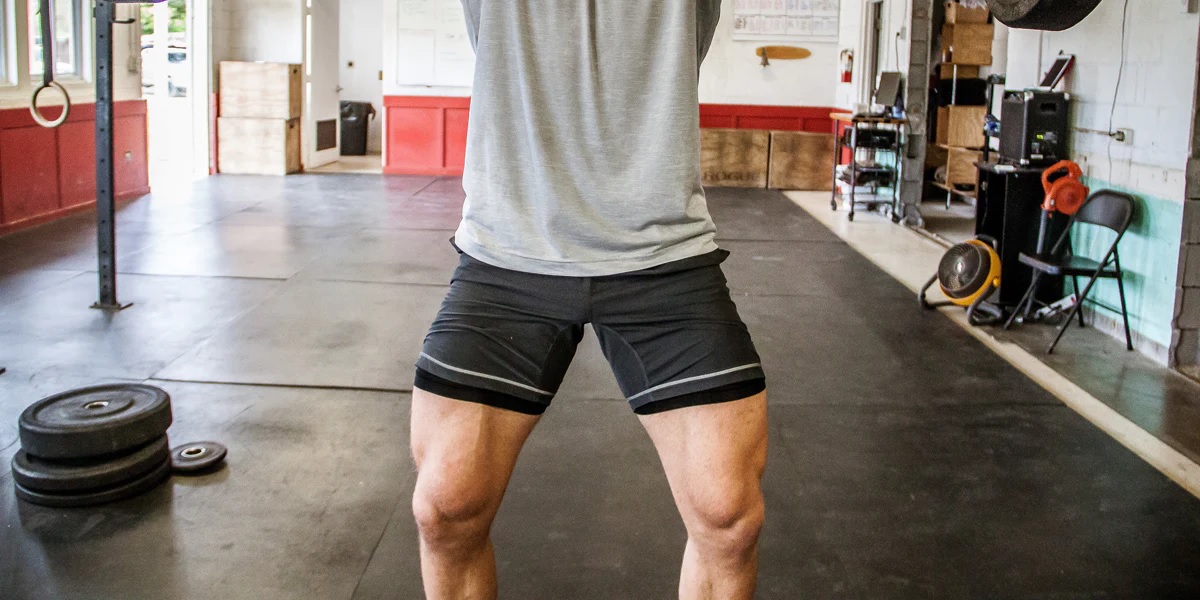

Featured
What Is Intense Workout
Modified: August 21, 2023
Discover the benefits of an intense workout. Get featured fitness tips, exercises, and workout routines to take your fitness to the next level.
Introduction
When it comes to maintaining a healthy lifestyle, exercise is an essential component. While any form of physical activity is beneficial, there are times when you want to take your workouts to the next level. This is where intense workouts come into play. Whether you’re a seasoned athlete or a fitness enthusiast looking for a new challenge, intense workouts can provide the adrenaline rush and physical demands you seek.
An intense workout is characterized by high intensity and challenging exercises that push your body to its limits. It involves pushing beyond your comfort zone, elevating your heart rate, and exhausting your muscles. Intense workouts can range from high-intensity interval training (HIIT) to circuit training, CrossFit, or even intense weightlifting sessions. The goal is to maximize your effort and achieve maximum results in a shorter amount of time.
Intense workouts have gained popularity in recent years due to their efficiency and effectiveness in burning calories, building strength, and improving overall fitness levels. They offer a variety of benefits that go beyond just physical fitness. By incorporating intense workouts into your exercise routine, you can boost your metabolism, increase endurance, improve cardiovascular health, and enhance mental focus and discipline.
In this article, we’ll delve into the world of intense workouts, exploring the different types, benefits, and safety precautions to consider. Whether you’re an experienced athlete or new to the concept of intense workouts, this comprehensive guide will provide you with the information you need to embark on this challenging and rewarding fitness journey. So, get ready to step up your fitness game and take your workouts to new heights!
Definition of an Intense Workout
An intense workout can be defined as a physical fitness session that involves vigorous and challenging exercises performed at a high level of intensity. It is a form of exercise that pushes your body to its limits, demanding maximum effort and exertion. Intense workouts typically incorporate a combination of cardiovascular exercises, strength training, and interval training techniques to maximize results.
Unlike moderate or low-intensity workouts, where you maintain a steady pace and exertion level, intense workouts require you to push beyond your comfort zone. This means pushing your body to its limits, working at a high intensity level for a shorter duration. The goal is to challenge your muscles and cardiovascular system, promoting the development of strength, endurance, and overall fitness.
Intense workouts can take various forms, depending on your fitness goals and preferences. Some popular examples include high-intensity interval training (HIIT), which alternates between short bursts of intense exercise and periods of rest or active recovery. Circuit training is another intense workout approach that involves moving through a series of exercises with minimal rest in between. CrossFit, a popular fitness program, combines elements of weightlifting, aerobic exercise, and bodyweight movements to create a challenging and intense workout.
In addition to the physical demands, intense workouts also place a high emphasis on mental focus and discipline. They require individuals to push through fatigue, discomfort, and self-imposed limitations to achieve their fitness goals. This mental toughness cultivated through intense workouts can carry over into other aspects of life, helping individuals overcome challenges and reach their full potential.
It is important to note that intensity is relative and can vary from person to person. What may be intense for one individual may not be as challenging for another. It is essential to listen to your body, gradually increase intensity levels, and consult with a fitness professional if you are new to intense workouts or have any underlying health conditions.
In the following sections, we will explore the numerous benefits of incorporating intense workouts into your fitness routine, as well as the different types of intense workouts and how to prepare for them. So, get ready to elevate your fitness journey and experience the power of intense workouts!
Benefits of Intense Workouts
Intense workouts offer a wide range of benefits that go beyond just physical fitness. By incorporating these challenging exercise sessions into your regular routine, you can experience significant improvements in various aspects of your health and well-being. Here are some key benefits of intense workouts:
- Efficient Calorie Burn: Intense workouts are known for their ability to burn a high number of calories in a shorter period. The combination of high-intensity exercises and interval training techniques increases your metabolic rate, leading to continued calorie burn even after your workout is complete.
- Improved Cardiovascular Health: Intense workouts are excellent for your heart health. The intense bursts of activity followed by short rest periods help to elevate and then lower your heart rate, improving your cardiovascular endurance and strengthening your heart muscle.
- Increased Strength and Muscle Tone: Intense workouts incorporate resistance training exercises that target multiple muscle groups. This helps to build strength and improve muscle definition. As your muscles are continually challenged, they adapt and become stronger over time.
- Enhanced Endurance and Stamina: Engaging in intense workouts regularly can significantly improve your endurance and stamina. By pushing your body to its limits, you train your body to withstand and overcome physical challenges, leading to increased stamina and improved performance in other physical activities as well.
- Boosted Metabolism: Intense workouts can rev up your metabolism, making it more efficient at burning calories even at rest. This can be particularly beneficial for weight loss and weight management goals.
- Mental Focus and Discipline: Intense workouts require mental toughness and discipline to push through fatigue and discomfort. This can help improve your mental focus, resilience, and discipline, which can carry over into other areas of life.
- Increased Energy and Mood Enhancement: Intense workouts stimulate the release of endorphins, commonly known as the “feel-good” hormones. These hormones can boost your mood, reduce stress levels, and increase your energy levels, leaving you feeling more energized and positive.
- Improved Body Composition: Intense workouts, when combined with a balanced diet, can lead to improved body composition. They can help decrease body fat percentage while increasing muscle mass, resulting in a leaner and more toned physique.
These are just a few of the many benefits that intense workouts can offer. However, it is important to approach intense workouts with caution and listen to your body. Proper form, adequate rest, and gradual progression are essential to avoid injury and maximize the benefits of intense workouts.
In the following sections, we will explore different types of intense workouts and common mistakes to avoid. So, continue reading to learn more about how to incorporate intense workouts safely and effectively into your fitness routine.
Types of Intense Workouts
Intense workouts come in various forms, each offering its own unique challenges and benefits. Whether you prefer cardiovascular exercises, strength training, or a combination of both, there is an intense workout style that suits your preferences and fitness goals. Here are some common types of intense workouts:
- High-Intensity Interval Training (HIIT): HIIT involves short bursts of intense exercise followed by short periods of rest or active recovery. This type of workout can be adapted to various activities such as running, cycling, or bodyweight exercises. The intense bursts elevate your heart rate, while the rest periods allow for recovery, making HIIT an efficient and highly effective way to burn calories and improve cardiovascular fitness.
- Circuit Training: Circuit training involves moving through a series of exercises targeting different muscle groups with minimal rest in between. This type of workout is typically performed in a circuit format, with each exercise lasting a specific duration before moving on to the next. Circuit training provides a full-body workout, combining cardiovascular conditioning and strength training, making it an excellent choice for those looking to improve both endurance and strength.
- CrossFit: CrossFit is a high-intensity fitness program that combines elements of weightlifting, aerobic exercise, and bodyweight movements. It encompasses a wide range of exercises and workouts, often performed in a competitive and supportive environment. CrossFit workouts are designed to push individuals to their limits, emphasizing functional movements and overall fitness.
- Tabata: Tabata is a specific form of high-intensity interval training that follows a 20-second work period, followed by a 10-second rest period, repeated for a total of eight rounds. This intense workout format is known for its effectiveness in improving cardiovascular fitness and burning calories in a short amount of time.
- Boot Camp: Boot camp-style workouts are intense and fast-paced, often mimicking the training drills used by military personnel. These workouts typically combine cardiovascular exercises, strength training, and bodyweight movements to provide a full-body workout that challenges both endurance and strength.
- Pyramid Training: Pyramid training involves gradually increasing and then decreasing the intensity or weight used in a workout. For example, in a pyramid-style weightlifting session, you may start with lighter weights and increase the weight with each set before gradually decreasing it. This type of workout helps to build both strength and muscular endurance.
These are just a few examples of the many intense workout styles available. It’s important to choose a workout style that aligns with your preferences, fitness level, and goals. Remember to start gradually and progress at your own pace, allowing your body time to adapt and recover.
In the next sections, we will discuss common mistakes to avoid during intense workouts as well as safety precautions to ensure a safe and effective workout experience. So, continue reading to learn more about how to make the most out of your intense workouts.
Common Mistakes to Avoid in Intense Workouts
Intense workouts can be incredibly effective when performed correctly, but there are common mistakes that individuals may make that can hinder progress or even lead to injury. To ensure a safe and effective intense workout experience, here are some common mistakes to avoid:
- Skipping Warm-up and Cool-down: Many people underestimate the importance of warming up before an intense workout and cooling down afterward. Skipping these essential components can increase the risk of injury and prevent your body from properly preparing for and recovering from the intense exertion. Always allocate time for a dynamic warm-up and a proper cool-down to prevent muscle strains, joint pain, and post-workout soreness.
- Ignoring Proper Form: In the pursuit of intensity, it’s easy to sacrifice form. However, maintaining proper form is crucial to prevent injury and ensure effective muscle engagement. Focus on mastering the correct technique before increasing the intensity. If needed, consult a fitness professional or trainer to ensure you’re performing exercises with proper form and alignment.
- Overtraining: While intense workouts can yield great results, it’s important to allow your body adequate rest and recovery time. Overtraining can lead to fatigue, decreased performance, and an increased risk of injury. Incorporate rest days into your routine and listen to your body’s signals to avoid overexertion.
- Not Progressing Gradually: Intense workouts are meant to challenge your body, but it’s important to progress gradually over time. Doing too much too soon can lead to burnout, injuries, and setbacks. Gradually increase the intensity, duration, or resistance of your workouts to allow your body to adapt and minimize the risk of overexertion.
- Neglecting Proper Nutrition and Hydration: Intense workouts place high demands on your body, and proper nutrition and hydration are essential for fueling your workouts and promoting recovery. Make sure to consume a balanced diet that provides adequate energy, protein, and nutrients. Stay hydrated before, during, and after workouts to optimize performance and prevent dehydration.
- Ignoring Pain or Discomfort: While it’s normal to experience some muscle soreness or fatigue during intense workouts, it’s important to distinguish between discomfort and pain. Ignoring pain or pushing through injuries can worsen the condition and lead to long-term consequences. If you experience persistent or severe pain during a workout, it’s crucial to stop and seek medical attention if necessary.
Awareness of these common mistakes can help you avoid potential pitfalls and ensure a safe and effective intense workout routine. By prioritizing proper form, adequate rest, gradual progression, and overall self-care, you can maximize the benefits of intense workouts and minimize the risk of injury or burnout.
In the next section, we will discuss important safety precautions to keep in mind when engaging in intense workouts. So, continue reading to learn how to exercise safely and confidently.
Safety Precautions for Intense Workouts
Engaging in intense workouts can provide numerous benefits, but it’s important to prioritize safety to prevent injuries and ensure a positive exercise experience. Before diving into intense workouts, consider these essential safety precautions:
- Consult with a healthcare professional: If you have any underlying health conditions, are new to intense workouts, or have been inactive for a while, it’s crucial to consult with a healthcare professional or qualified fitness trainer. They can assess your fitness level and provide guidance on suitable exercise programs and any precautions you may need to take.
- Start with a proper warm-up: A thorough warm-up prepares your body for intense exercise by increasing blood flow to the muscles and raising your core temperature. Include dynamic stretches and movements that mimic the exercises you will be performing in your workout. This helps reduce the risk of muscle strains and other injuries.
- Use proper equipment and attire: Ensure that you have appropriate footwear, clothing, and protective gear for your chosen intense workout. This includes wearing supportive shoes, comfortable clothing that allows for a full range of motion, and any necessary protective gear such as helmets or wrist guards. Using the right equipment helps prevent accidents and enhances performance.
- Listen to your body: Paying attention to your body’s cues is crucial during intense workouts. While it’s normal to experience some fatigue or muscle soreness, be cautious of signs of overexertion, dizziness, or severe pain. Pushing through extreme discomfort can lead to injuries. Modify or stop exercises if needed and seek medical attention if symptoms persist.
- Stay hydrated: Intense workouts cause increased sweating and fluid loss, so it’s important to stay hydrated before, during, and after your workout. Drink plenty of water or isotonic beverages to replenish electrolytes and maintain optimal performance.
- Gradually increase intensity: Progressing gradually is essential to allow your body to adapt and reduce the risk of overuse injuries. Increase intensity, duration, or resistance in small increments as your fitness level improves. Avoid pushing yourself too hard too soon.
- Pay attention to recovery: Proper recovery is just as important as the workout itself. Allow time for rest days, as well as incorporating activities such as stretching, foam rolling, or low-impact exercises to promote muscle recovery and prevent overtraining.
- Seek professional guidance: If you’re new to intense workouts or unsure about proper technique, consider working with a certified fitness professional or personal trainer. They can provide guidance on form, create a customized workout plan, and offer support and motivation.
Remember that safety should always be a priority during intense workouts. By following these precautions, you can reduce the risk of injury and enjoy a safe and effective exercise session. If you have any concerns or questions, don’t hesitate to consult with a healthcare professional or fitness expert.
In the next section, we will discuss how to prepare your body for an intense workout, including tips for fueling and nourishing your body properly. So, keep reading to learn more about preparing for a successful intense workout!
How to Prepare for an Intense Workout
Preparing your body for an intense workout is crucial for maximizing performance and minimizing the risk of injury. By following these steps, you can ensure that you’re fully prepared to take on the challenges of an intense workout:
- Evaluate your fitness level: Assess your current fitness level and choose an intense workout that aligns with your abilities. If you’re new to intense workouts or have been inactive for a while, start with beginner-friendly options and gradually progress to more advanced workouts.
- Set specific goals: Determine what you want to achieve with your intense workouts. Whether it’s improving cardiovascular endurance, increasing strength, or boosting overall fitness, setting clear goals helps you stay motivated and focused.
- Establish a routine: Designate specific days and times for your intense workouts. Consistency is key when it comes to consistency in achieving your fitness goals. Having a set schedule helps you mentally and physically prepare for the challenge ahead.
- Warm-up properly: Before diving into intense exercises, make sure to warm up your muscles and increase your heart rate. Engage in dynamic stretches, such as arm circles, leg swings, and trunk rotations. Gradually increase the intensity to prepare your body for the upcoming workout.
- Fuel your body: Proper nutrition is essential for sustaining energy during an intense workout. Consume a balanced meal or snack that includes carbohydrates for energy, protein for muscle repair, and healthy fats for satiety. Aim to eat 1-2 hours before your workout to allow for digestion.
- Stay hydrated: Hydration is crucial for maintaining optimal performance during intense workouts. Drink water before, during, and after your workout. If your intense workout lasts longer than an hour, consider sipping on an electrolyte-rich beverage to replenish lost electrolytes.
- Focus on recovery: Dedicate time to proper recovery after an intense workout. Cool down by engaging in light exercises and stretching to reduce muscle soreness and promote flexibility. Consider incorporating activities like foam rolling or yoga to aid in muscle recovery.
- Listen to your body: Pay attention to how your body feels during the workout. If you experience pain or extreme discomfort, it may be a sign to modify or scale back the intensity. Push yourself, but also know when to give yourself a break to prevent overexertion or injury.
- Adjust as needed: As you progress in your intense workouts, be open to adjusting your routine and exercises. Increase the intensity, duration, or resistance gradually as your fitness level improves. This keeps your workout challenging and helps you avoid plateaus.
- Stay motivated: Intense workouts can be physically and mentally demanding, so finding ways to stay motivated is important. Set small milestones, reward yourself for reaching goals, and find a workout buddy or join a fitness community for support and accountability.
By following these steps, you’ll be well-prepared to tackle your intense workouts with confidence and achieve your fitness goals. Remember that everyone’s journey is unique, so it’s important to listen to your body and adjust your workouts accordingly. With proper preparation and dedication, you can make the most out of your intense workout sessions.
In the next section, we will discuss the importance of proper nutrition for intense workouts and provide some nutritional considerations to help you fuel your body effectively. So, keep reading to learn more about nourishing your body for optimal performance!
Nutritional Considerations for Intense Workouts
Proper nutrition plays a vital role in supporting intense workouts and maximizing performance. Fueling your body with the right nutrients helps provide the energy needed to push through challenging exercises and aids in muscle recovery. Here are some important nutritional considerations to keep in mind for your intense workouts:
- Pre-workout nutrition: Before an intense workout, consume a balanced meal or snack that includes carbohydrates, protein, and healthy fats. Carbohydrates provide readily available energy, while protein supports muscle repair and growth. Opt for whole grains, lean proteins, fruits, and vegetables to provide sustained energy throughout your workout.
- Hydration: Hydration is crucial for optimal performance during an intense workout. Aim to drink water regularly throughout the day to stay adequately hydrated. Leading up to your workout, drink 16-20 ounces of water 1-2 hours beforehand and continue sipping water during exercise. If your workout is longer than an hour or particularly intense, consider consuming a sports drink or electrolyte-rich beverage to replenish lost electrolytes.
- Timing of meals/snacks: It’s important to time your meals and snacks properly in relation to your intense workouts. Eating a proper meal 2-3 hours before your workout allows for digestion and maximizes energy availability. If you need a snack closer to your workout, choose something lighter that can be easily digested, such as a piece of fruit or a small protein shake.
- Post-workout nutrition: After an intense workout, prioritize post-workout nutrition to aid in muscle recovery and replenish glycogen stores. Consume a mix of carbohydrates and protein within 30-60 minutes of finishing your workout. This can be a protein shake, a balanced meal, or a combination of both. Including a source of fast-digesting carbohydrates helps replenish glycogen, while protein aids in muscle repair and growth.
- Healthy snacks for sustained energy: In addition to pre and post-workout nutrition, have healthy snacks on hand to fuel your workouts and provide sustained energy. Opt for snacks that combine carbohydrates and protein, such as Greek yogurt with berries, a banana with peanut butter, or a handful of nuts and dried fruits.
- Supplementation: While a well-balanced diet should provide most of the nutrients needed for intense workouts, there may be instances where supplementation is beneficial. Consult with a healthcare professional or registered dietitian to determine if you have any specific nutrient deficiencies or if supplementation could be of benefit for your individual needs.
- Listen to your body: Every individual is unique, and nutritional needs may vary. Pay attention to how your body responds to different foods and timing. Experiment with different pre and post-workout meals/snacks to find what works best for you in terms of energy levels, digestion, and overall performance.
Remember, nutrition is a crucial component of your overall fitness journey. By fueling your body with the right nutrients and staying hydrated, you can optimize your performance, support muscle recovery, and reach your fitness goals more effectively.
In the next section, we will address some frequently asked questions about intense workouts to help clarify any doubts or concerns you may have. So, continue reading to find answers to commonly asked questions!
Frequently Asked Questions about Intense Workouts
Intense workouts can be challenging and may raise questions for individuals who are new to this style of exercise. Here are some frequently asked questions about intense workouts, along with their answers, to help clarify any doubts or concerns:
- Q: Are intense workouts suitable for beginners?
A: Yes, intense workouts can be modified to suit beginners. It’s important to start at an appropriate fitness level and gradually increase intensity and duration over time. Consulting with a fitness professional or personal trainer can help guide beginners in choosing suitable exercises and modifications. - Q: How often should I incorporate intense workouts into my routine?
A: The frequency of intense workouts depends on your fitness level, goals, and overall schedule. Ideally, aim for 2-4 intense workouts per week, allowing for rest days and recovery. It’s important to find a balance and listen to your body’s signals to avoid overtraining. - Q: Can intense workouts help with weight loss?
A: Yes, intense workouts can be effective for weight loss. They help burn calories, boost metabolism, and promote fat loss. However, it’s important to combine intense workouts with a balanced diet and overall healthy lifestyle to achieve sustainable weight loss. - Q: Can I do intense workouts if I have underlying health conditions?
A: It’s crucial to consult with a healthcare professional before engaging in intense workouts if you have underlying health conditions. They can provide guidance on suitable exercises, modifications, and any precautions you need to take based on your specific condition. - Q: What should I do if I feel lightheaded or dizzy during an intense workout?
A: Feeling lightheaded or dizzy during an intense workout can indicate dehydration or exertion. Take a break, hydrate, and allow yourself time to recover. If the symptoms persist, it’s essential to listen to your body and stop the workout. Consulting with a healthcare professional may be necessary if this issue persists. - Q: Can I lose muscle while doing intense workouts?
A: It’s unlikely to lose significant muscle mass while doing intense workouts, especially if you incorporate resistance training exercises. However, proper nutrition and recovery are crucial for muscle preservation and growth. Ensure you’re consuming enough protein and providing your body with adequate rest and recovery. - Q: Can I combine different types of intense workouts in one routine?
A: Yes, it’s possible to combine different types of intense workouts in one routine. This can help prevent boredom, challenge your body in new ways, and target different muscle groups. Just be mindful of balancing rest and recovery and avoid overtraining. - Q: How can I prevent muscle soreness after intense workouts?
A: While some muscle soreness after intense workouts is normal, you can minimize the severity and duration by incorporating proper cool-down exercises, stretching, and foam rolling. Adequate hydration and nutrition, as well as getting enough sleep, are also important for muscle recovery.
These are just a few common questions about intense workouts. If you have any specific concerns or further inquiries, it’s best to consult with a healthcare professional or a fitness expert who can provide personalized guidance and support.
In the final section, we will conclude our comprehensive guide to intense workouts, summarizing the key points discussed throughout the article. So, keep reading to wrap up your knowledge on intense workouts!
Conclusion
Intense workouts offer a challenging and effective way to improve physical fitness, boost metabolism, and enhance overall health. By incorporating high-intensity exercises into your routine, you can push your body to new limits and achieve impressive results. Whether you choose to engage in high-intensity interval training, circuit training, CrossFit, or other intense workout styles, it’s important to prioritize safety, proper form, and gradual progression.
Throughout this comprehensive guide, we have explored the definition of intense workouts, the benefits they offer, and different types of intense workouts you can incorporate into your fitness routine. We also discussed common mistakes to avoid, safety precautions to follow, and provided tips on how to prepare your body and mind for intense workouts. Additionally, we highlighted the importance of proper nutrition and hydration to support your intense workouts.
Remember, everyone’s fitness journey is unique, so it’s important to listen to your body, adjust workouts accordingly, and consult with professionals as needed. Intense workouts can yield great results, but they should be approached mindfully and with respect for your individual capabilities and limitations.
Now that you have a comprehensive understanding of intense workouts, it’s time to put your knowledge into action. Take the necessary steps to incorporate intense workouts into your fitness routine, considering your goals, preferences, and fitness level. Stay consistent, stay safe, and enjoy the incredible benefits that intense workouts can bring to your physical and mental well-being.
Remember, it’s not just about the exercise itself, but the journey you embark on towards a healthier and stronger version of yourself. So, take that first step, challenge yourself, and let the power of intense workouts propel you towards reaching your full potential.







